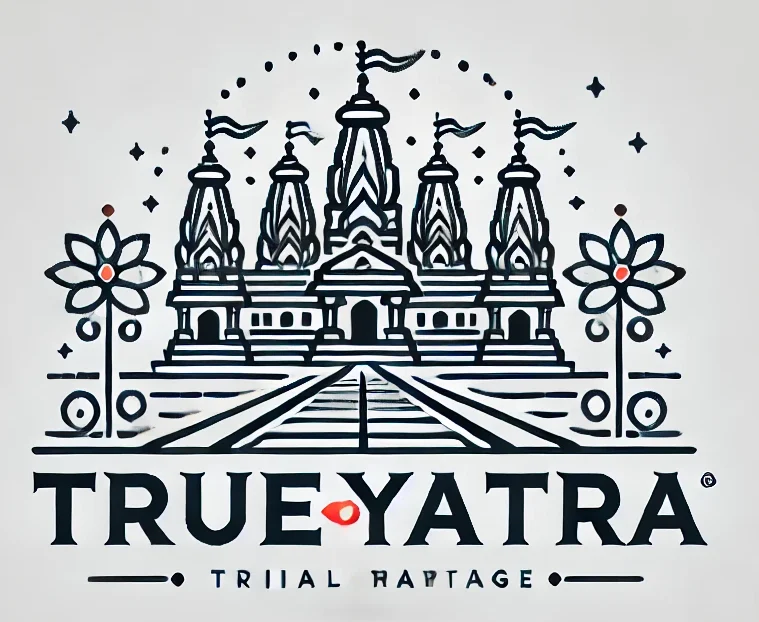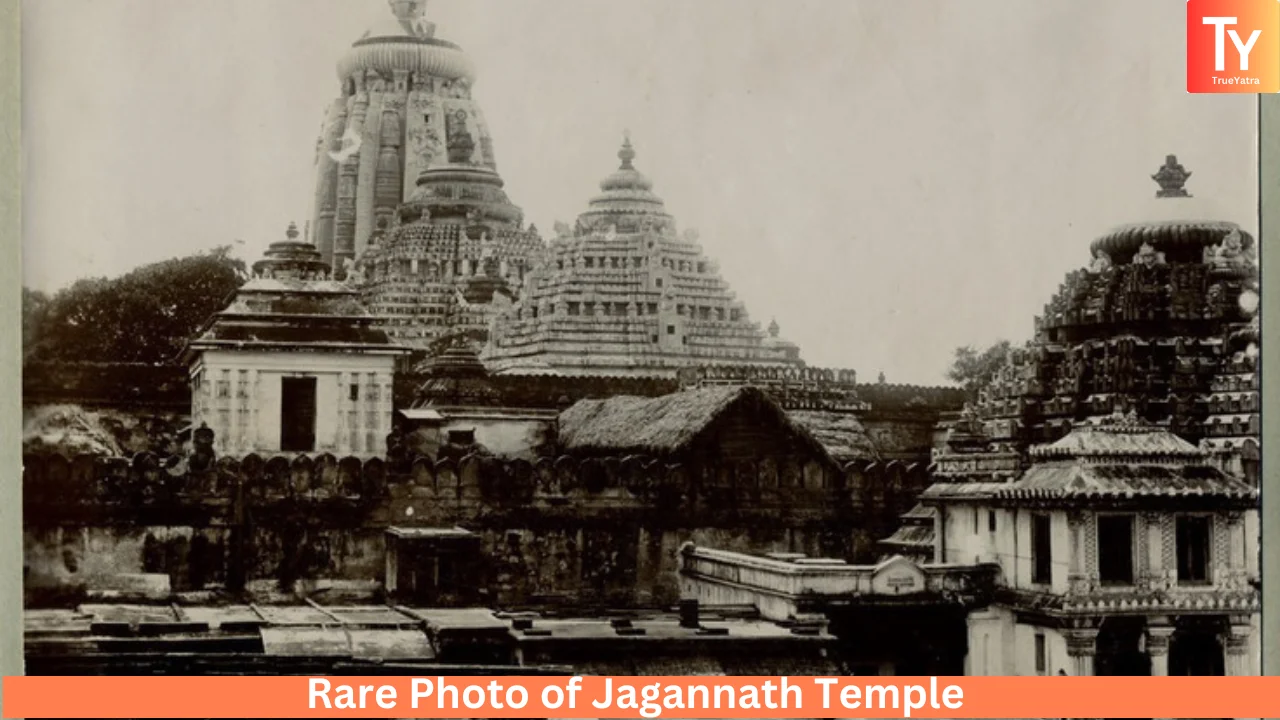The Jagannath Temple is an important Hindu temple dedicated to Lord Jagannath, who is a form of Vishnu who is considered as one of the trinity of supreme divinity in Hinduism situated in Puri in the state of Odisha, on the eastern coast of India. The main temple at puri was built by King Indradyumna of Avanti.
The Jagannath temple is considered as one of the Char Dham pilgrimage sites in India. The other three of the Char Dham are Badrinath, Dwarka, and Rameswaram. The temple is considered as one of the major tourist attractions of Odisha.
The annual Ratha Yatra, or chariot festival, at the Puri temple is the oldest Ratha Yatra of India and in the whole world is considered as one of the greatest festivals in the history of Jagannath temple and is celebrated during the month of June or July, according to English calendar and on the second day of the Shukla Paksha, Ashadh month as per the Hindu calendar. Lord Jagannath, Lord Balabhadra and Devi Subhadra are the main deities present in the temple.
The Jagannath Temple
In the history of Jagannath temple, Sri Shankaracharya visited Puri by 810 CE and founded the Govardhana Matha, since then Puri was considered as one of the four Dham of India known as Char Dham.
There are four famous pilgrimage sites in India known as the Char Dhams which includes the four most holy pilgrimages of Hinduism in India, which are Badrinath, Dwarka, Rameswaram, and Puri.
These four holy places are situated at the four corners of India Badrinath in the North, Dwarka in the West, Puri in the East, Rameswaram in the South and Jagannath Temple in the East.
The Jagannath Temple is located in Puri, Odisha is one of the most popular temples of Puri, the capital of the state of Odisha.
History of Jagannath Temple
History of Jagannath Temple is quite interesting. Jagannath Temple was built under the reign of Ganga Dynasty. The famous King Chodaganga constructed the famous Jagannath Temple.
The king started the construction and it was completed during the 12th century, the Jagamohan or the assembly hall and Vimana or chariot of the temple were constructed during his reign. In 1174 AD Anangabhima Deva completed the construction of the temple.
The deities are believed to be much older and are associated with the great ruler of the Satya-yuga, King Indrayumna who was the nephew of Lord Ram.
During 1174 CE , history of Jagannath temple, King Anang Bhim Deo ascended the throne of Orissa . At his young age Once, he slew a Brahmin, then religious crises started . He invested greatly in construction of temples during his reign for the public to lessen his sins.
He built the ancillary shrines and the walls of the popular Jagannath temple which took about fourteen years to complete and was completed in 1198 CE.
In the History of Jagannath temple, The Idols of Lord Jagannath, Lord Balabhadra and Devi Subhadra were revered by the King Anang Bhim Deo and God were worshiped in the Jagannath temple until 1568.
According to the Historians, the Jagannath temple at Puri is believed to have been invaded and plundered about eighteen times.
In the history of the Jagannath temple during 1575, the deities were restored in the Jagannath temple of Puri by Ramachandra Deva I of the King of Khurda.
In the history of Jagannath temple, The Mughal Emperor Aurangzeb ordered to close the Jagannath temple until he orders to reopen it and the temple was closed in 1692 and was reopened in 1707 after Aurangzeb death.
The Maratha and the British overtook the control of the Temple in 1751 and 1803 respectively.
In 1809, during British rule the British East India Company returned the charge of the Temple to the king who would retain control of the temple.
In the history of the Jagannath temple In 1975, the Archeological Survey of India undertook a project to remove the multiple layers of lime plaster and to give a final beautiful look to the temple and This construction project lasted for more than two decades.
Legendry History of Jagannath Temple
There is a great interesting story related to the history of Jagannath Temple. It was believed that Indradyumna was a king and was a great worshiper of Lord Vishnu. Once the king got the news that the Lord Vishnu had come on earth in the form of Nila Madhava and the king sent the priest Vidyapati to search for Lord Vishnu.
On the way searching for Lord Vishnu, Vidyapati reached a place where Sabaras were residing. Vishvavasu was the local chief and invited Vidyapati to live with him.
Vishvavasu had a daughter whose name was Lalita and Vidyapati was married to her after sometime. Once, Vidyapati noticed that when his father-in-law returned, his body had a good smell of sandalwood, camphor, and musk.
He asked his wife about her father, she told Vidyapati about the worship of Nila Madhava by her father. Vidyapati immediately asked his father-in-law to take him to Nila Madhava. Visvavasu took him to the cave. Vidyapati took with him seeds of mustard which he dropped on the way so that he can remember the route to the cave.
Vidyapati informed the king Indradyumna about the Lord Vishnu and the king reached the place but the deity disappeared. In order to meet Lord vishnu, the king observed fast on Mount Neela. Once he heard a voice in his dream saying that he will be able to see the deity of Lord Vishnu and for this he sacrificed a horse and built a temple and Narada and installed the idol of Sri Narsimha in the temple.
One night he slept and saw Lord Jagannath in his dream and also heard a voice telling him about a fragrant tree and ordered the king to make idols of Lord Jagannath, form of vishnu from the wood of the fragrant tree and after the dream the king made the idols of Lord Jagannath, his brother Lord Balabhadra, and sister Devi Subhadra. Along with the deity of God he also made the Sudarshan Chakra.
Then the king pleased Lord Brahma to visit the temple and the deities. Lord Brahma was pleased with his prayer and Lord Brahma saw the temple and then asked the king about his one desire which Lord Brahma can fulfill. and the king asked that there shall be no issues in his life and he should be the last one from his family members and if anybody is left from his family, then he should work for the welfare of the great Jagannath temple and not the society.
Invasions on the Temple
In the history of Jagannath temple, The temple was invaded nearly eighteen times by many foreign rulers. The temple was looted plenty of times because of enormous wealth present in it. Due to these invasions, the idols of Lord Jagannath, Balabhadra, and Subhadra were transferred to various other places in order to save them.
- In the history of Jagannath Temple, First Invasion was done by Raktavahu in the 9th century.
- The Second Invasion was done by Illias Shah, Sultan of Bengal.
- The Third Invasion was done by Feroze Shah Tughlaq in 1360.
- The Fourth Invasion was done by Ismail Ghazi, commander of Allauddin Hussain Shah, who was Sultan of Bengal. The invasion was done during 1509.
- The Fifth Invasion was done by Kalapahara in 1568 AD.
- The Sixth Invasion was done by Suleman and Osman. Suleman was the son of Kuthu Shah whereas Osman was the son of Isha who was the ruler of Odisha.
- The Seventh Invasion was done by Mirza Khurrum, the commander of Islam Khan, in 1601AD.
- The Eighth Invasion was done by Hasim Khan, Subedar of Odisha in 1608 AD, .
- The Ninth Invasion was done by Kesodasmaru who was a jagirdar and a Hindu Rajput.
- The Tenth Invasion was done by Kalyan Malla, son of Raja Todar Mal in 1611 AD.
- The Eleventh Invasion was done by Kalyan Malla in 1612.
- The Twelfth Invasion was done by Mukarram Khan in 1617 AD.
- The Thirteenth Invasion was done by Mirza Ahmad Beg who was the nephew of Nurjahan, wife of Jahangir.
- The Fourteenth Invasion was done by Amir Mutaquad Khan in 1641 AD.
- The Fifteenth Invasion was done by Amir Fateh Khan in 1647 AD.
- The Sixteenth Invasion was done by Ekram Khan, the Nawab of Odisha in 1699.
- The Seventeenth Invasion was done in 1731 by Muhammad Taqi Khan.
- The Eighteenth Invasion was done in 1881 by the followers of Alekh religion.
FAQ’s- Frequently Asked Questions
When and By Whom the deities of Lord Jagannath and their siblings were restored ?
In 1575, the deities were restored by Ramachandra Deva I of the King of Khurda.
Why the Jagannath temple is considered as one of the char dhams of India ?
Sri Shankaracharya visited Puri by 810 CE and founded the Govardhana Matha, since then Puri was considered as one of the four Dham of India known as Char Dham.
When was Jagannath temple invaded for the first time and by whom?
The First Invasion of Jagannath Temple was done by Raktavahu during the 9th century.
Who built Jagannath Temple of Puri?
Jagannath Temple was built under the reign of Ganga Dynasty. The famous King Chodaganga constructed the famous Jagannath Temple. The king started the construction during the 8th century and the Jagamohan or the assembly hall and Vimana or chariot of the temple were constructed during his reign. Later , In 1174 AD Anangabhima Deva completed the construction of the temple.
Why and How many times the Jagannath Temple of Puri was invaded?
The temple was invaded nearly eighteen times. The temple was looted plenty of times because of enormous wealth present in it. Due to these invasions, the idols of Lord Jagannath, Balabhadra, and Subhadra were transferred to various other places in order to save them.


The Jagannath Temple, in Puri, Odisha, is a revered Hindu shrine dedicated to Lord Jagannath, an incarnation of Lord Vishnu. Built in the 12th century, its history is rich and steeped in tradition. The temple’s iconic Rath Yatra, or chariot festival, attracts millions of devotees annually, showcasing the temple’s profound cultural and religious significance in India.
Nice information and very useful i want to start solo traveling so i am exploring some places and i wanted to visit first time to a religious place so puri is best option so by searching for information i found this blog and it has all info about the place for any one who want to visit their first time . About culture, climate,hotels and all necessary information.
The Jagannath Puri temple is one of the major char dhams, located in eastern India. Reading about its history fascinated me. I have an urge to visit this temple once in my life time.
Thanks lokesh for your wonderful feedback. We are committed to deliver the best information on tourism, Temple, Tirth Sthal.
The Jagannath Temple is one of the most revered Hindu temples in India. It is located in the coastal town of Puri, Odisha, and is dedicated to Lord Jagannath, a manifestation of Lord Vishnu. The temple is believed to have been built in the 11th century by King Anantavarman Chodaganga.
The temple is famous for its annual Rath Yatra festival, in which the idols of Lord Jagannath, his brother Balabhadra, and his sister Subhadra are taken out in procession on huge chariots. The festival attracts millions of pilgrims from all over India.
The temple has a long and rich history, and has been subjected to numerous invasions and attacks. However, it has always stood strong, and remains a symbol of Hindu faith and devotion.